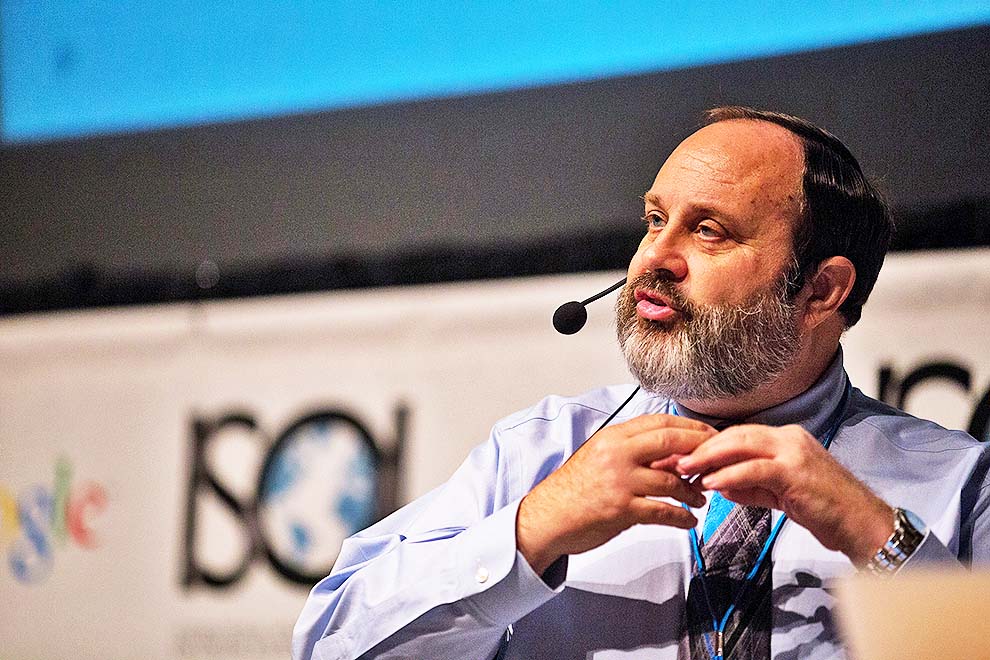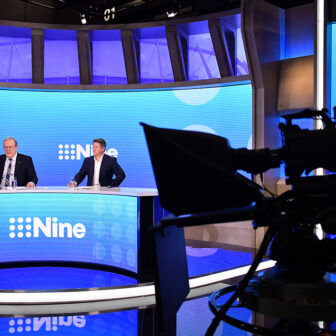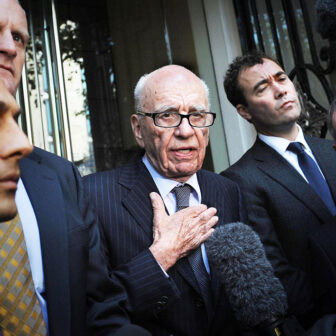The idea that governments should provide financial assistance to news publishers is receiving more serious consideration in Australia than at any time in living memory. At the heart of the Senate inquiry into the Future of Public Interest Journalism, established in May in the wake of another round of lay-offs at Fairfax, lies the question of government’s role in ensuring a “viable, independent and diverse” news media. During the committee’s hearings – and in submissions it has received – some form of public subsidy is figuring prominently among the potential answers.
The reason is straightforward enough. Australia has lost between 2500 and 3000 media jobs this decade. That’s a quarter of our total journalistic capacity. Advertisers have left for Google, Facebook and other non-journalistic vendors of eyeballs, and they’re not coming back. Subscriptions to news outlets are growing but even non-subscribers enjoy the benefits of public interest journalism – liberal freedoms, democratic participation and low corruption. That means public interest journalism is unlikely to be privately purchased in the kind of quantities a healthy democracy needs.
And yet, as Matthew Ricketson, professor of communication at Deakin University and key player in the 2012 Finkelstein Review, told me, “I think if you asked the average person in the street, should the government provide money to the media, and put it like that, they’d probably be wary about it. Because they’d be worried about control and editorial interference.”
Ricketson is no doubt right. We don’t even need to accost people on the street. A submission to the Senate inquiry by libertarian researcher Chris Berg articulates exactly this anxiety. Arguing against state support for individual firms and journalists, Berg claims that the “real or perceived political interference, or just funding decisions that favour particular sides of politics, would undermine their democratic function.” Berg imagines an unsustainable conflict of interest in which “government planners would have to support organisations which are specifically dedicated to countering the planners’ interests, and would have to do so in a way that does not affect the political balance of the industry.”
Does a government-fed watchdog lose its bark?
In outlining this case, Berg makes no reference to the experience of any country in the world where subsidies already exist. And for good reason: the international evidence flatly contradicts his position. The five countries that topped the Reporters Without Borders World Press Freedom Index in 2017 were Norway, Sweden, Finland, Denmark and the Netherlands. All five provide direct subsidies to their newspapers (typically targeted at publications with weaker market positions). Lest the conjunction of state support and press freedom be dismissed as a Scandinavian curiosity, consider the finding of a 2014 policy brief from the London School of Economics. Of ten countries where governments provide direct assistance to their news industry, only Italy has any issues in relation to press freedom – and it still generally ranks in the top third of press freedom indices.
Senators and observers need only review the very comprehensive appendix to the submission of the Journalism Education & Research Association of Australia (itself an updated version of Annex K in the Finkelstein Report) to see just how widespread subsidy systems are. As well as the Nordic countries, Austria and the Netherlands provide annual direct subsidies. The Dutch government also offers loans and loan guarantees to support new media start-ups. The French employ a suite of measures, including subsidisation of transport, distribution and communications, a digital innovation fund, and tax incentives for journalists and publishers. Newspapers in Britain are exempt from the value added tax, normally levied at a rate of 20 per cent. A dozen other European countries, including Germany, Italy and Ireland, also provide a total exemption or significant reduction in their VAT.
That Berg didn’t feel the need to explore evidence from any of these countries is a symptom of the prevailing assumptions of our political culture. In Australia, we have taken it for granted that there would be something fundamentally dubious about governments handing over cash to newspaper owners. And yet this practice is as accepted in other parts of the world as it seems strange to us.
Internationally, subsidy regimes tend to be around half a century old. They have endured as governments have changed and power has oscillated between left and right, and they generally enjoy broad support across party lines. Josef Trappel, head of Communication Policy and Media Economics at the University of Salzburg, told me that “there is support for these kinds of subsidies almost across the entire political spectrum” in his country. “The strong parties in Austria, which are basically the Social Democrats, the Conservatives, the Freedom Party and the Greens – they are convinced that public subsidies for the press are a good thing.” It’s hardly the kind of consensus that would exist if governments were using subsidies to favour friends and intimidate opponents.
Robert Picard is one of the world’s leading academic experts in the field, dividing his time between the Reuters Institute at Oxford and the Information Society Project at Yale. “What we have been able to show in studies over the last four to five decades now,” he told me, “is it is possible to fashion subsidy mechanisms where the discretion to give the money is taken out of the hands of the existing government.” There are two critical elements in the design of subsidy schemes that protect them from abuse. The first is that subsidies are disbursed by a body that’s at arm’s length from the government of the day. Typically, it’s an independent statutory commission, but in Belgium, for example, the responsibility is delegated to an industry organisation. The second feature is that subsidies are allocated according to explicit and objective criteria, meaning that even the independent body has very little discretion.

It can be done: media researcher Robert Picard. Gabriel Cristóver Pérez/Knight Center
In these respects, press subsidies tend to work in much the same way as the election funding provided through the Australian Electoral Commission, which makes its allocations according to first-preference votes received. As with election funding, we shouldn’t be complacent about the possibility that public assistance to the news industry could be abused. But like election funding, we have every reason to be confident that the risk can be managed satisfactorily. As well as Picard and Trappel, I spoke to media scholars in Denmark, Sweden and Britain. None could think of an example of an allegation of subsidies being used by governments to intimidate or favour news organisations – or the appearance of such.
It turns out that news publishers can accept support from the state without compromising their independence. The freest media in the world are subsidised by the very governments they hold to account. There’s nothing to stop the Public Interest Journalism Senate committee – chaired by Labor’s Sam Dastyari with the Greens’ Scott Ludlam as deputy – from concluding that subsidies don’t harm democracy.
But do they do any good? The answer to this question is more complicated, partly because it raises another: good for what? In the twentieth century, the newspaper industry was swimming in cash. The problem was a tendency towards monopoly – so subsidies worked if they increased diversity and competition. In the twenty-first century, newspaper companies, big and small, are losing revenue and shedding the journalists vital to a healthy democracy. Whether subsidies can do any good in response to this problem is the question everyone is asking.
Do subsidies work? The Swedish case
Sweden is widely regarded as having one of the most successful subsidy schemes in the world. The Swedish Press Subsidies Council oversees subsidies for newspaper distribution and digital development, and what are called operational subsidies – annual payments targeted to the weaker players in news media markets. To qualify for the subsidy – which is funded by a tax on advertising – a print or digital newspaper needs to be published at least once a week, meet a minimum circulation requirement and, critically, have less than 30 per cent market share. The paper also needs to be at least 51 per cent original editorial content (and the more there is, the greater the subsidy). The subsidies constitute only 2–3 per cent of total industry revenue but typically amount to between 15 and 20 per cent of revenue for the weaker titles that are their main beneficiary. For some, the subsidy can amount to as much as a third of total earnings.
Sweden introduced its subsidy system in 1970 after two decades in which a net sixty newspapers had gone out of business. While there were local factors at play, this was an instance of an international phenomenon: the strong tendency towards monopoly in twentieth-century newspaper economics, memorably described by Warren Buffett as “survival of the fattest.” The “fattest” newspaper in a market enjoyed highly advantageous economies of scale and was the most attractive to advertisers. Over time, thinner rivals were driven out of business. In most Western countries, the total number of newspapers, newspaper proprietors and cities where two newspapers competed all sharply declined over the course of the twentieth century.
The Swedish government’s intervention mitigated against this trend by tilting the scales in favour of the second and third newspapers in each regional market. On the eve of the global financial crisis, Sweden – a country with a population of fewer than ten million people – had seventy-eight daily newspapers and the same number of weeklies. There were five geographical markets with separately owned newspapers, and a further ten where there were two competing newspapers owned by the same company. (Recall that the test for receiving the operational subsidy revolves around producing original editorial content, not being independently owned.)
How much credit the subsidies deserve for this happy state of affairs is a matter of scholarly debate. Affluent and highly literate, the Swedes have always had remarkably high rates of newspaper readership. (Historically around 75 per cent of adults reported reading a newspaper each day, almost twice the percentage in countries like Australia and Britain.) The strong tradition of “political parallelism” – close alignment between newspapers and political parties – has probably helped smaller papers stay in business. These factors are important, but few question the role of subsidies in the remarkable diversity and vitality of the Swedish news industry.
Yet it’s also the case that subsidies have not spared the Swedish news industry from the problems associated with collapsing advertising revenue in the digital environment. The Swedish Newspaper Market During the 21st Century, a report delivered to the Swedish government this year, describes how “the newspaper industry is not employing as many people any more, and the number of local editorial offices has decreased.” Total industry revenue has declined to levels not seen since the 1980s, and where five cities had separately owned newspapers a decade ago, now there are none. “What has happened,” Lars Nord from Mid Sweden University told me, “is that second-ranking newspapers have in many cases been bought by the leading newspaper and merged into one newspaper company, sometimes with two different titles and sometimes with one single newspaper.” The last remaining city in Sweden with separately owned newspapers was Karlstad. The city’s two newspapers announced a merger in January.
Perspective is important here, though. The same report describes a level of ownership concentration, nationally, that Australia – with its duopoly controlling 90 per cent of the market – would love to have. “The eight largest newspaper groups,” the report explains, “now control seventy-six out of Sweden’s ninety-three mid- and high-frequency daily newspapers.” That’s right, the eight largest newspaper groups have a combined 82 per cent market share.
The Swedish case makes it clear, if it wasn’t already, that subsidies aren’t a silver bullet. The problem of lost advertising revenue is orders of magnitude greater than any existing subsidy solution. In Sweden, state support amounts to less than 3 per cent of total industry revenue; advertising has traditionally accounted for two-thirds of revenue. So the question Australia should be asking is not whether industry assistance is going to be the solution but whether it can be part of it. Josef Trappel suggests that “the composition of revenue in the future might be a certain kind of mosaic of different elements. And I think one piece in that mosaic can and should be subsidies. It should not be the most important one. It should not be the only one. It should not be the dominant one. But it can help.” He observes that “in those countries where there are subsidies, newspapers are doing better than in others.” Isolating the effect of state support, amid all the variables at play, is as challenging as it is important. But, on the face of it, there are grounds for believing that appropriately designed subsidies make a difference.
The art of the possible
Even if the international evidence buttresses the policy case for state intervention, is such a policy remotely possible in Australia? The Senate committee might recommend in favour (although it’s unlikely that Senator James Paterson – the former Institute of Public Affairs operative and Coalition member of the committee – will be any more persuaded by the international evidence than Chris Berg is). Ultimately, however, the Senate committee is a creature of the Labor Party, the Greens and the Senate crossbench: its findings are unlikely to receive any sympathy from the government. Then there’s the kind of treatment such a proposal would doubtless receive from the right-wing commentariat.
If it’s true that any proposal for a subsidy scheme is likely to face stiff opposition, it’s also the case that the ground is shifting rapidly – something evidenced by the fact of the Senate committee itself. Upon its establishment, Senator Dastyari said that “there is a role for government and policy-makers to create a vibrant, free and independent industry… [and] recent events emphasised the need for better policy settings to ensure quality journalism [is] sustainable into the future.” Who would have imagined, at the start of the century, any mainstream politician – let alone a powerbroker from the right of the NSW Labor Party – saying that in a context where industry assistance is a live issue?
At one level, this proposal simply reflects the extent of the carnage that has occurred in the news industry. At another, it points to why subsidies have hitherto been politically unimaginable. The only reason for government to have intervened in the second half of the twentieth century would have been to increase competition and diversity. But if anything like the Swedish scheme had been applied here – with government support targeted to publications with less than 30 per cent market share – it would almost exclusively have functioned to prop up competition with Murdoch-owned mastheads. Try to think of an Australian politician anywhere near the reins of power during the last half-century who’d be willing to sign up for that.
Now, however, there is a possibility that policy and politics can rhyme – or at least get along. If industry assistance were introduced now, it’s likely to be a general subsidy that benefits all players – News Corp as much as Fairfax, Schwartz Media, HuffPost Australia or Private Media. The Finkelstein Report floated the idea of subsidies “defined as a percentage of the wage bill of dedicated investigative journalism units established by publishers.” Such a subsidy would not be tilted in favour of smaller publishers. The more investigative journalists a company employs, the more help it would get. Although Finkelstein ultimately recommended against subsidies at that time, this model continues to be a lot more politically plausible than a Scandinavian-style scheme.
The case for using subsidies to bolster weaker market players is no longer as strong as it was. The online environment offers an undreamt-of diversity of opinion (even while the much more expensive investigative journalism and public record journalism are under threat). Moreover, all market participants – monopolists, dominant players and otherwise – are suffering from the collapse of advertising revenue and, as a result, are laying off journalists. But subsidies can play a role, and they are receiving fresh consideration in countries that have long had them in place. The Swedish government launched its own inquiry into the future of journalism last year – a process that is still under way. In order to make their scheme platform-neutral, the Danes changed the basis for calculating subsidies in 2014, from circulation to the number of journalists employed.
If sentiment towards subsidies in Australia is primarily shifting because of the very public decline of a highly visible industry, there are also other forces shaping the debate. The inquiry’s terms of reference give fake news plenty of attention. If it’s a term that became a meaningless insult some time ago, it surely also reflects a general anxiety about our information environment. As Corinne Schweizer, the author of Public Funding of Private Media, told me, “I think the fake news debate is helping us out a bit. Even though it’s horrible what’s spread out there, it kind of shows people that journalistic work needs some time, it needs some resources. It needs to be done properly. Many people are now aware, for instance, that fact checking is a thing. So maybe that helps the discussion a bit.”
At least as long as Russian interference in the 2016 United States presidential election is making headlines, this anxiety will continue to be aggravated, and continue to receive the kind of attention associated with threats to national sovereignty. In the Conversation recently, Ben Eltham persuasively argued that we should levy Facebook and Google to fund journalism. As well as the appeal of taxing two companies that are rolling around in the cash that used to pay for quality journalism, the proposal speaks to a desire to civilise their outsized influence. Whether it’s inspired by fear of Russia or fear of Facebook, concern that news is reliable and trustworthy is an increasingly salient feature of political conversation, in the broadest sense.
Australians have long been strong supporters of government’s presence in broadcasting, just as much as we have assumed its absence from print. Now media convergence stands to challenge our bifurcated political common sense. On the one hand, the ABC provides a precedent for the role of government in the digital media environment. On the other, government support for commercial journalism could help address concerns that the ABC is competing with publishers that are increasingly reliant on subscription revenue. This complaint was aired by Fairfax CEO Greg Hywood at the Senate committee’s hearings in Sydney. Subsidies that support public interest journalism could double as de facto compensation for the reality of competition from the public provider in the digital environment.
Of course, public interest journalism could be strengthened by expanding funding of the ABC (or, at least, by reversing the perversely timed cuts in the 2014, 2015 and 2016 budgets). Why devote public resources to subsidising commercial journalism that could be allocated to the ABC? Partly, to sustain diversity. Partly, it’s possible to do both. A tax on Google and Facebook would provide a fiscal justification for a net expansion of public support for journalism (public and private). But it might even be the case that, politically speaking, subsidising private news media organisations would make it easier to increase funding for the ABC, not harder. Not only would it address the gripe from commercial publishers about competing with the ABC, in the long run spreading taxpayer funding around could help deflate some of the hostility directed at the public provider from the right.
The Senate committee will deliver its report in December. Almost irrespective of what it recommends – or whether its recommendations are adopted – it will represent the remarkable rise to respectability of a political idea. Not so long ago, the notion of publicly subsidising the news media industry was almost unthinkable. It is now receiving serious attention. Some deft political entrepreneurship in response to digital disruption (and other phenomena like fake news and media convergence) has ushered subsidies into the sphere of legitimate debate. As Matthew Ricketson says, “One of the best things about the fact that the Senate has set up this inquiry into public interest journalism is that there’s a recognition that this is a live issue now… There’s a live debate that we as a nation should be having about whether the market has failed to the point that some kind of government intervention is necessary.” •




